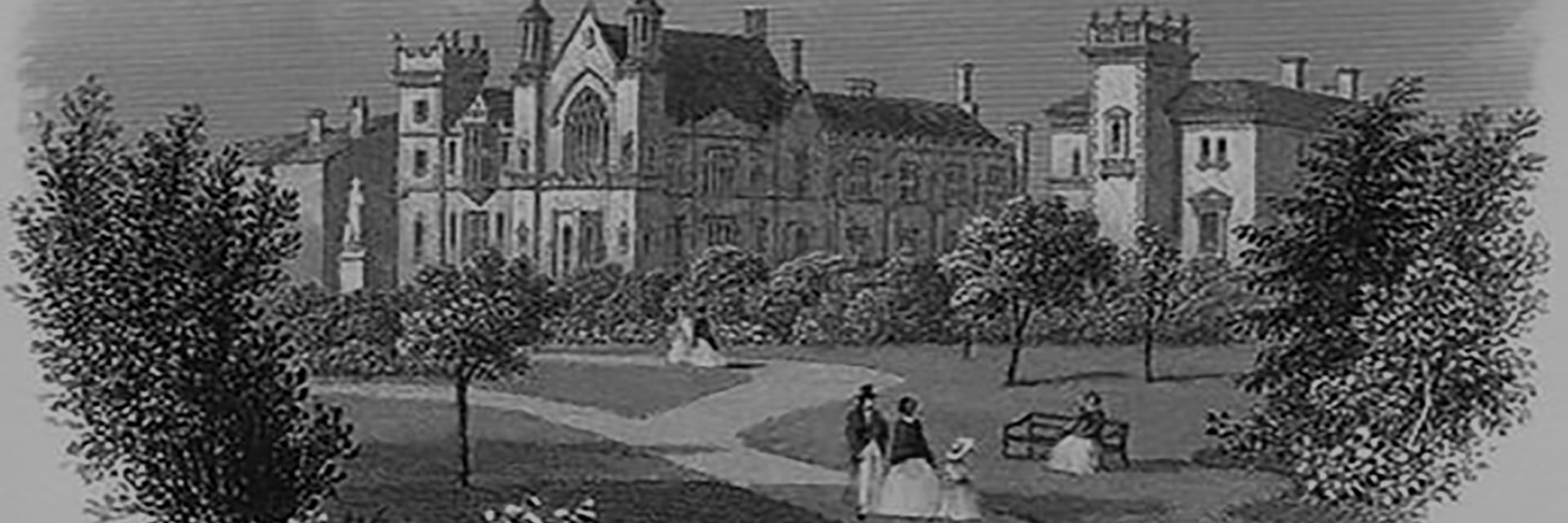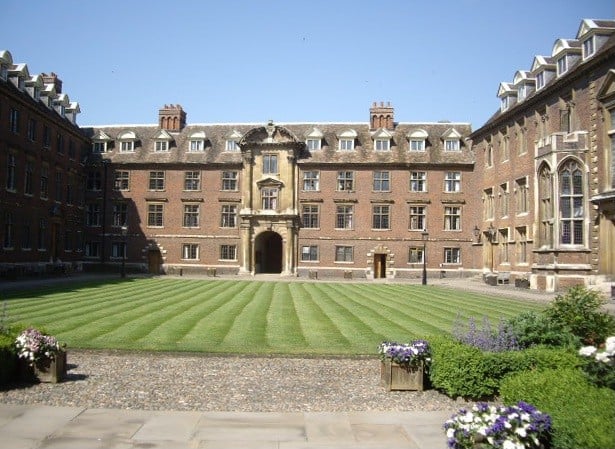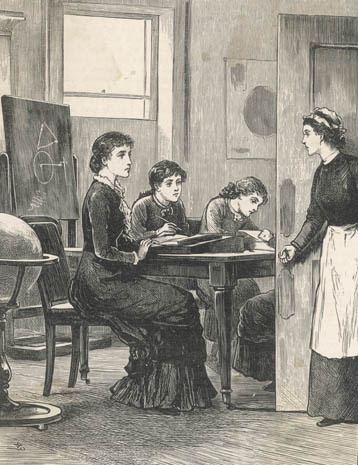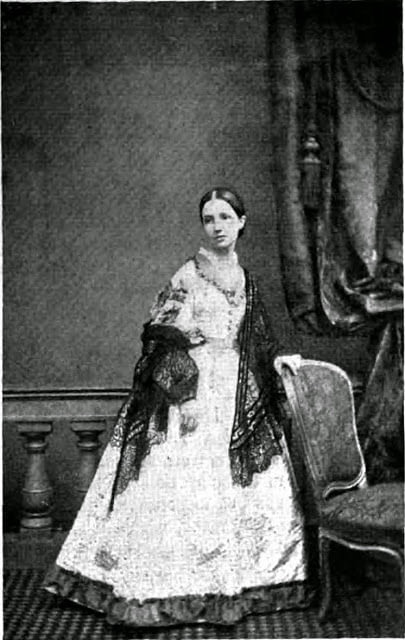
Frances (Fanny) Parr
1824 - 1886 | 8 Winckley Square

Frances (Fanny) Parr lived at a time when young ladies of a certain class were prepared for marriage and not for work but Fanny needed to earn her own income from an early age. Fanny had the benefit of a ‘good education’ and was able to make her way in the world as a governess. It would appear that she was more fortunate than some governesses who, in many cases, were treated poorly by their employers.
Early Years
Fanny Parr was born in York on 4th August 1824, the daughter of William and Mary Parr.
William was a travelling merchant of silks, satins, and coloured kidskins and his wife Mary (née Grandage) of Halifax was a dress-maker. Fanny had an older brother, William, and a younger brother and sister: George and Harriet. When Fanny was six, her father died. His death and the reduction in family income meant the girls’ prospects of a ‘good’ marriage were greatly reduced.
Inequalities in boys and girls education
The England census of 1841 shows William, George and Harriet resident in York with their mother and a young servant. William was a Cambridge University student who later achieved an M.A. at Katherine Hall (now St Catherine’s College) and became a teacher of Classics and Mathematics. George was a Lithographic apprentice and pursued a career first as a lithographic artist and then later as a librarian.

At this time, girls were not educated to the same standard as boys. The wealthier classes expected their daughters to achieve financial security through a good marriage which demanded an education centred upon the acquisition of social graces and home-management skills. Small day and boarding schools were set up in every town to cater for these needs by offering a ‘polite and useful education’ through such subjects as English reading, grammar, history, recitation, geography, French, music, writing, drawing and fancy needlework.
In the 1841 census, Fanny Parr was recorded as attending such a school: The Misses Haden Establishment for Ladies, in the Clifton St. Olave’s Parish in York. Her sister Harriet later attended a similar school.
Fanny becomes a governess
In the mid 19thCentury however, there was a steadily rising surplus of women over men, leaving many women without the expectation of marriage as security. Fanny and Harriet had no private income to support them but were deemed too well-bred to work in a shop or factory. They took the only work suitable to their social standing: that of governess.
Fanny found a position in Preston with a family with wealthy connections: the Cairns. Mary Cairns was the younger sister of Thomas Miller of 5 Winckley Square, one of the cotton lords of Preston.
In 1851, Mary Cairns was a young widow living in Fishergate Hill with her three children: Catherine age 10, William age nine and seven year old Roseanna, all of whom were in Fanny’s charge.
Fanny’s responsibilities were to ensure that the children were grounded in the ‘three Rs’ and then to introduce the ‘accomplishments’ for the girls: gracefully maintaining good posture, speaking French, drawing, playing piano and needlework. She would also instruct the children in ‘the globes’ – geography and English history. William would soon be sent away to school for a more formal education.
Life as a governess

The lot of a governess was typically not a happy one. Much was written in the newspapers of the day about the mistreatment of these women who frequently found themselves isolated and marginalised in the family they served. On 4th October 1856, the Preston Chronicle and Lancashire Advertiser in its ‘Literary Notices’ column, reviewed a book entitled ‘Wonderful People’ by Horace Mayhew in which the author drew pen sketches of ‘model men and women’. Of the governess, he wrote:
‘Who has heard of a governess with friends? She never goes out, and is allowed no visitors. To be perfect, she should be ugly. Woe betides her if she is pretty! The mother suspects her, the young ladies hate her and the lady’s maid can’t abide her! Her dress, of course, must be of the plainest. She has not the consideration paid to the cook and very frequently not half the wages that are paid to the housemaid. In fact, the housemaid has the advantage of the two, for she is entitled to at least one month’s notice, whereas the poor governess is often dismissed at a moment’s notice’.
On some occasions young ladies might have been so desperate for a roof over their heads that they might have accepted a position such as this:
” Governess: A comfortable home, but without salary, is offered to any lady wishing for a situation as governess in a gentleman’s family, residing in the country, to instruct two little girls in music, drawing, and English; a thorough knowledge of the French language is required. Direct to A. B. Times 27th June 1845”
Preston Chronicle 18th July 1845
Governesses were poorly paid and redundant once their charges had grown. In 1843, Queen Victoria’s cousin, the Duke of Cambridge, chaired a meeting to try to establish a ‘Governesses benevolent society’ to provide for governesses in distress and to grant annuities to support them in old age
Fanny as governess in Winckley Square
Fanny seems to have found favour with Mary Cairns. By 1861 the census shows that she had moved on to another branch of the same family: the Millers of 8 Winckley Square. In this house resided Caroline Miller, the young widow of Henry Miller, younger brother and former business partner of Thomas Miller of 5 Winckley Square. Caroline Miller had three children: Mary age 15, Caroline age 12 and 11 year old Georgina. Fanny would have been familiar with these children before she was engaged as their governess, as they were the Cairns children’s cousins and Mary Cairns must have recommended Fanny’s talents to her sister-in-law.
Thomas Miller and his wife, Henrietta, had five children of similar ages to Caroline’s and the children would have frequently been in each other’s company, as Henrietta and Caroline were half-sisters and were close. Henrietta’s children also had a governess: Annie Dickson from Elvington, only seven miles from Fanny’s home town of York. Perhaps these two Yorkshire women, Fanny and Annie, found friendship through their close proximity and employers’ family connections. It is tempting to speculate that, together, they might have taken advantage of warm summer days to go into the Winckley Square Gardens to instruct their charges in the natural sciences!
Fanny’s later years
Thirty years later in 1881, the census shows that Fanny still had a close connection with Caroline’s family, for she was a resident at the home of Caroline’s daughter, Georgina. By this time, Georgina was a mother of three children aged six, five and two but Fanny’s relationship had elevated from governess to ‘visitor’.
Fanny’s sister; Harriet Parr: Novelist

The Sphere, March 10, 1910
Fanny was spared a penny-pinching old-age. She lived her final years in comfort at the home of her unmarried younger sister, Harriet, in Shanklin on the Isle of Wight. Like her sister, Harriet had also initially worked as a governess but soon discovered a talent for writing novels. She achieved great success, producing a novel a year from around 1853-1883. She also wrote religious works and children’s fairy stories and contributed to Charles Dickens’ weekly periodicals. She dedicated a novel entitled ‘In the Silver Age’ to her sister Fanny and it was reported that her works were the favourite reading of the Queen. Harriet Parr, Southland Times, Issue 14662, 6th June 1900
Click here to see Harriet’s List of Publications
Fanny died on 25th March 1886 and was buried in St Blasius churchyard in Shanklin; her sister Harriet was buried in the same grave on her death in 1900.
Useful resources
Founded in 1841, the Governesses’ Benevolent Institution was the first organisation to make significant improvements to governesses’ employment conditions.
Reports from the Governesses’ Benevolent Institution
By Susan Douglass